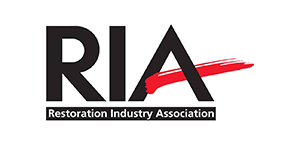Water damage can happen in a matter of hours, making it imperative to act fast. How long does it take for water to cause damage? The answer is not that straightforward because many factors come into play. The source of the water, the amount of exposure, and the time taken to respond to the situation all play a crucial role in determining the timeline of water damage.
Water damage can be catastrophic, leading to significant damage to your home or business if you do not act promptly. Understanding the timeline of water damage is critical to taking prompt action and avoiding costly repairs.
Key Takeaways:
- The timeline of water damage depends on various factors, including the source of water and the extent of exposure.
- Prompt action is crucial to prevent water damage from causing significant harm, leading to costly repairs.
- Understanding the timeline of water damage is the first step in taking proactive measures to protect your property and avoid long-term consequences.
Immediate Effects of Water Exposure
Water damage is a serious issue that requires immediate attention. When water makes contact with your property, it can have immediate effects that can be identified by several signs of water damage. If these signs are not addressed, they could ultimately lead to extensive damage within a short period.
The immediate effects of water exposure may include:
- Water stains on walls or ceilings – Water stains or discoloration on walls, ceilings, or floors can appear within hours of water exposure. These stains are indicative of water damage and could signal that there is standing water beneath the surfaces.
- Musty odors – Water damage can create a damp environment that fosters the growth of mold and mildew. The presence of a musty odor could be a sign of mold growth and should be addressed immediately to prevent further damage.
- Peeling or bubbling paint – Water can soak into drywall, causing paint to bubble or peel away from the surface. This effect could occur within a few hours of water exposure and is a clear sign of water damage.
- Warping or buckling floors – Water can penetrate into the subfloor and cause floors to warp or buckle. This effect could occur immediately after exposure, especially with hardwood floors.
If you observe any of these signs of water damage, it is vital to take immediate action. Ignoring these signs could lead to more severe damage, including structural damage, health risks, and permanent damage.
Short-term Damage from Water
When your property is exposed to water, it can cause immediate damage within a few hours. One of the most noticeable effects is the appearance of dark stains caused by water absorption. You may also observe peeling and bubbling of paint or wallpaper, which is caused by the breakdown of adhesive materials due to water saturation.
In addition, water damage can lead to unpleasant odors in your property that are caused by the growth of mold and mildew. This can be a serious health hazard, especially for people sensitive to mold allergens. To prevent mold growth, it is important to dry out affected areas as soon as possible.
Another short-term effect of water exposure is the warping and distortion of furniture and other objects made of wood or other porous materials. This is caused by the swelling of wood fibers due to water absorption, which can alter the shape and dimensions of objects. Depending on the extent of the damage, some items may be repairable while others may require replacement.
It is essential to address short-term water damage promptly to prevent further harm to your property. By responding quickly, you can avoid costly repairs and protect the value of your home or business.
Long-term Consequences of Water Damage
Water damage can cause severe and long-lasting harm to your property. If left unaddressed, the long-term consequences of water damage can be costly and a nightmare to repair. Water can cause permanent damage to various parts of your property, including walls, floors, and foundations, leading to the deterioration of the overall structure.
One of the most significant long-term consequences of water damage is mold growth. When water infiltrates your property, it creates a damp environment, which fosters rapid mold growth. Mold can spread quickly, affecting various materials in your home or business. This can lead to respiratory problems, especially in individuals with pre-existing conditions such as asthma or allergies.
Additionally, water damage can cause rot, decay, and corrosion, compromising your property’s functionality and safety. For instance, water damage to the electrical system can pose a risk of fire or electrocution. If the damage affects the plumbing system, it can lead to sewage backup and contamination.
Water damage can also diminish your property’s aesthetic appeal, reducing its market value and impairing your investment. It can leave unsightly stains and discolorations on walls and ceilings and cause woodwork to warp or buckle. In severe cases, the damage can render the property inhabitable and lead to extensive repairs and replacements.
Therefore, it is crucial to address water damage immediately to avert long-term consequences. You should contact a professional restoration company to assess the extent of the damage and provide remedial measures. Early intervention can save you significant amounts of time, money, and stress.
Conclusion
In conclusion, understanding the timeline of water damage is critical in safeguarding your property. Acting swiftly and efficiently in addressing water damage can mean the difference between minor repairs and costly replacements.
Remember, the immediate signs of water damage require prompt attention to prevent further harm. Failing to take action can result in extensive short-term damage that may lead to permanent damage.
By taking preventive measures and seeking professional remediation services, you can protect your property from the long-term consequences of water damage. Don’t wait until it’s too late. Be vigilant in monitoring your property for signs of water damage and take swift action whenever it’s necessary.
FAQ
How long does it take for water to cause damage?
The timeline for water damage can vary depending on several factors. In general, water can start causing harm within minutes of exposure. However, the severity and extent of the damage will depend on the source of water, the materials affected, and the speed of response. It’s crucial to address water damage promptly to minimize the potential for further harm.
What are the immediate effects of water exposure?
When water comes into contact with your property, there are several immediate signs of water damage to watch for. These can include standing water, damp or wet surfaces, discoloration, warping, musty odors, and mold growth. If you notice any of these signs, it’s essential to take immediate action to prevent further damage and address the underlying cause of the water exposure.
How does water damage impact a property in the short term?
In the short term, water damage can have significant effects on your property. Within a few hours or days of exposure, you may experience further structural damage, such as swelling or warping of wood, delamination of materials like plywood or particleboard, and the growth of mold and mildew. These effects can compromise the integrity of your property and may require extensive repairs if left unaddressed.
What are the long-term consequences of water damage?
If water damage is not promptly addressed, it can lead to long-term consequences. These consequences may include the deterioration of building materials, such as drywall, insulation, and flooring, as well as the growth of mold and mildew. Prolonged exposure to water can also weaken the structural integrity of your property, potentially requiring costly and extensive repairs or even replacements in severe cases.
How can I protect my property from water damage?
To protect your property from water damage, it’s important to take preventative measures such as maintaining proper drainage, ensuring the integrity of your roof and windows, and promptly addressing any plumbing leaks or issues. Additionally, having a well-maintained sump pump and investing in a quality water alarm system can provide added protection and early detection of water-related issues. Regular inspections and maintenance can help identify potential vulnerabilities before they lead to significant water damage.
























